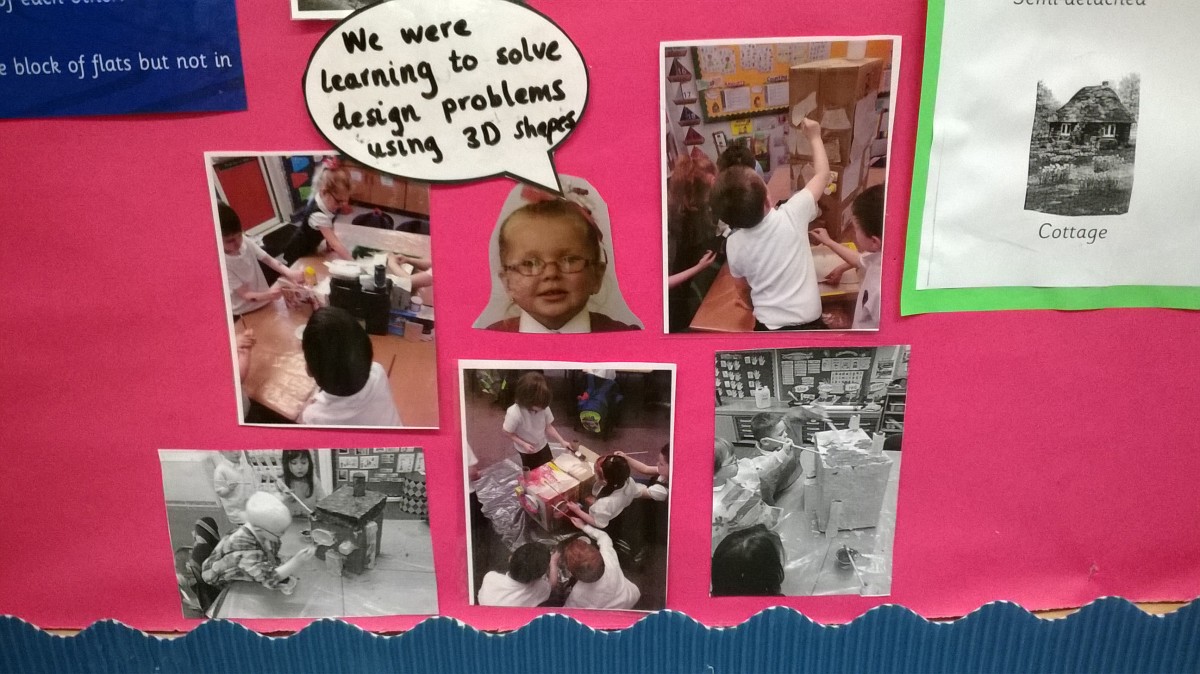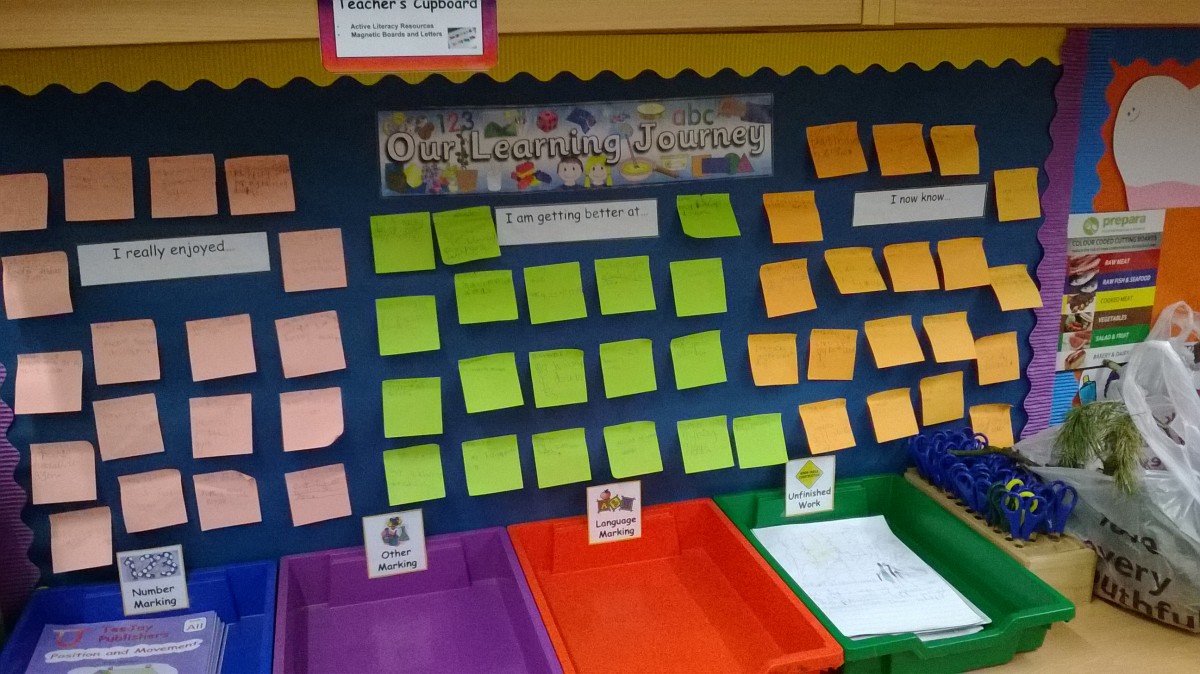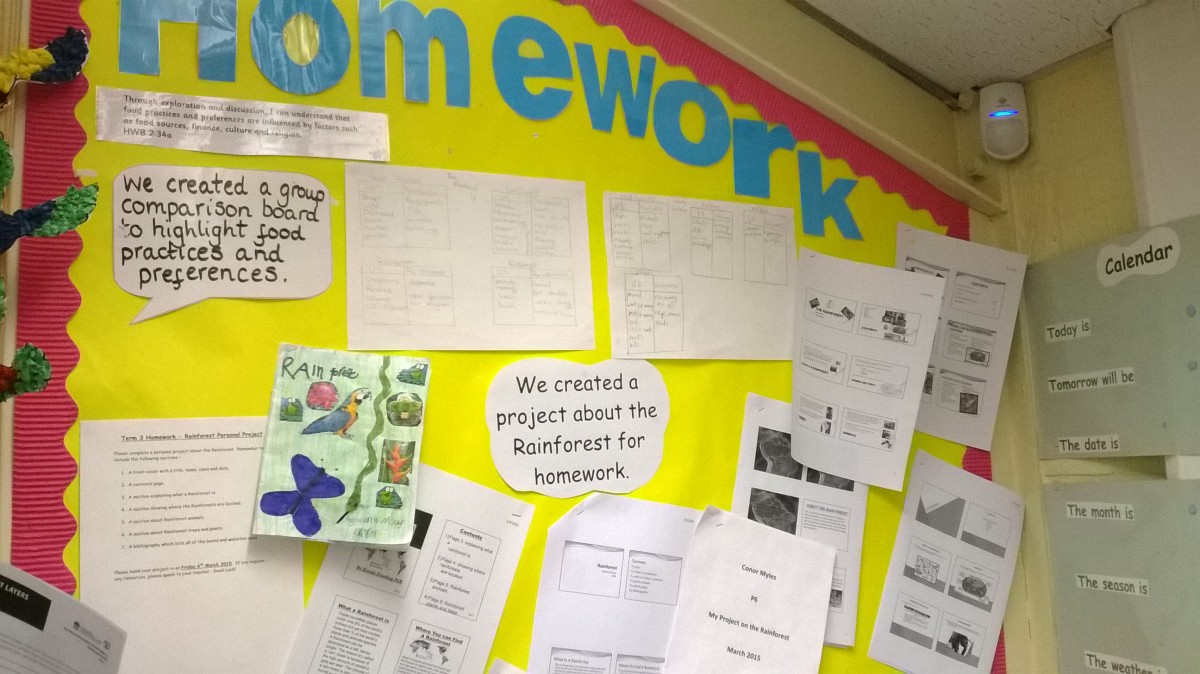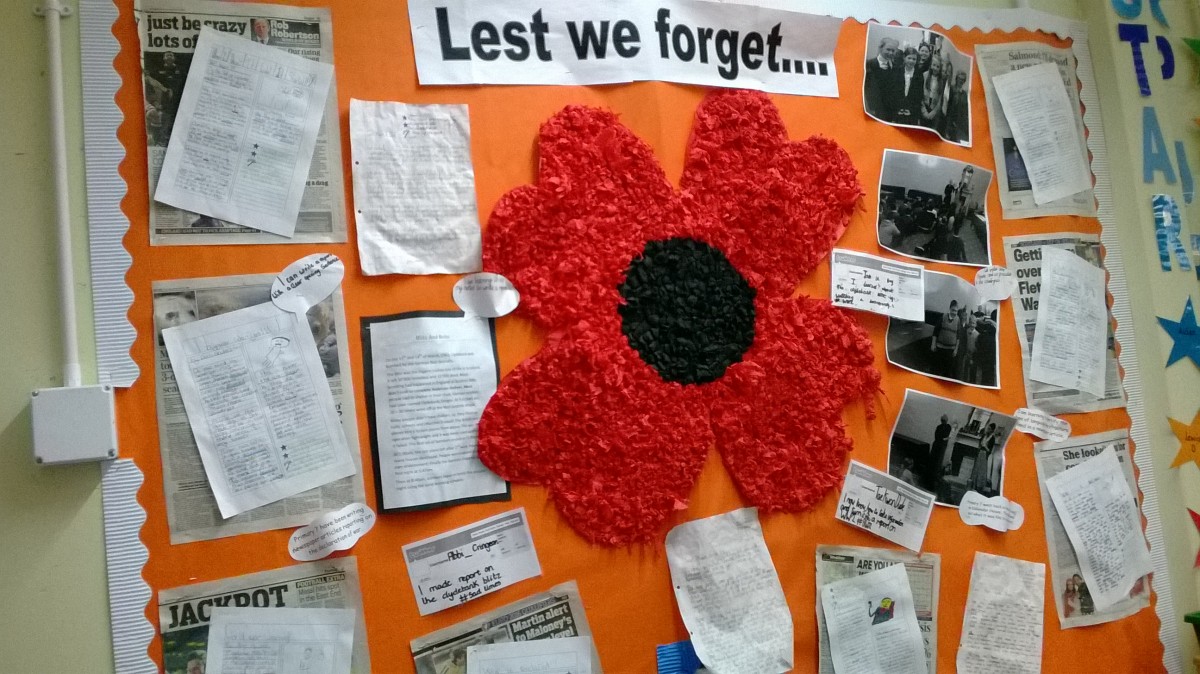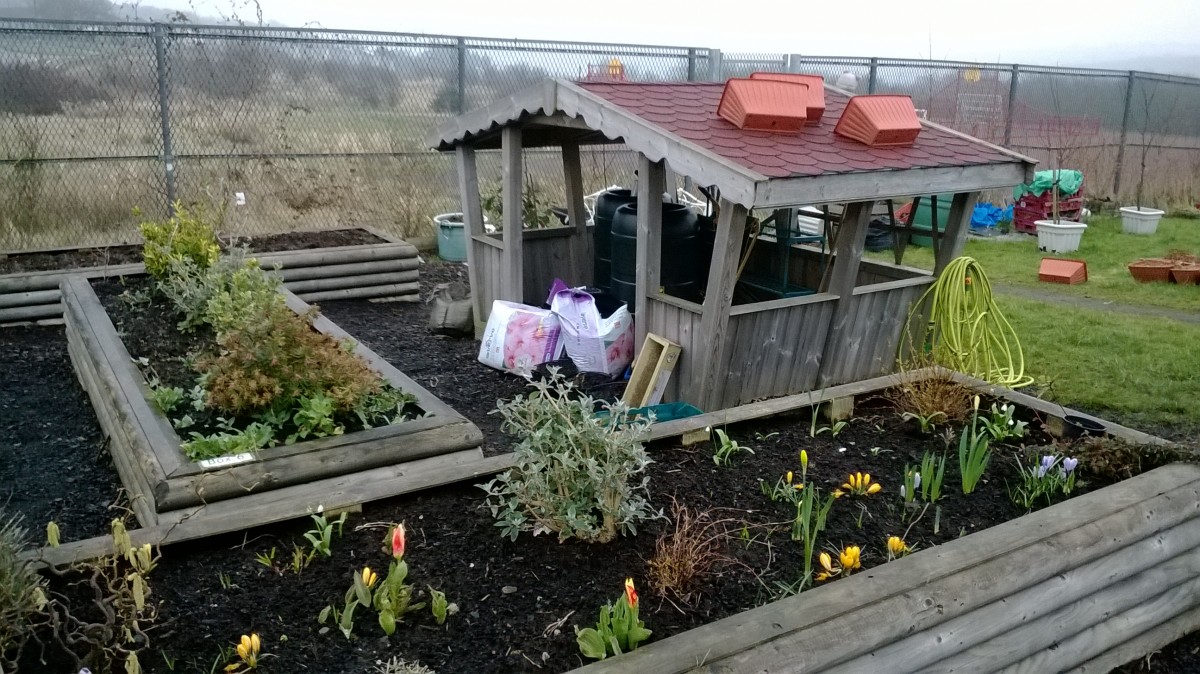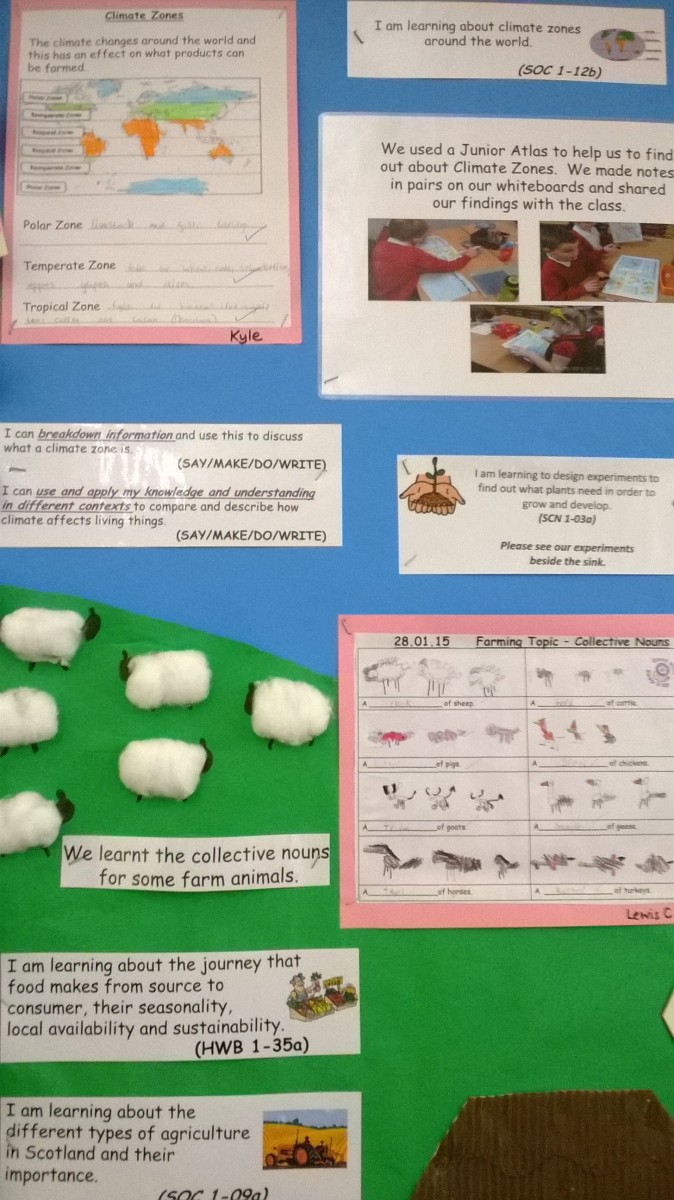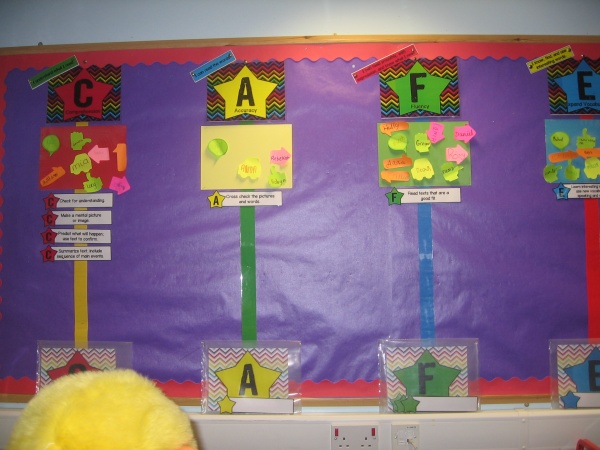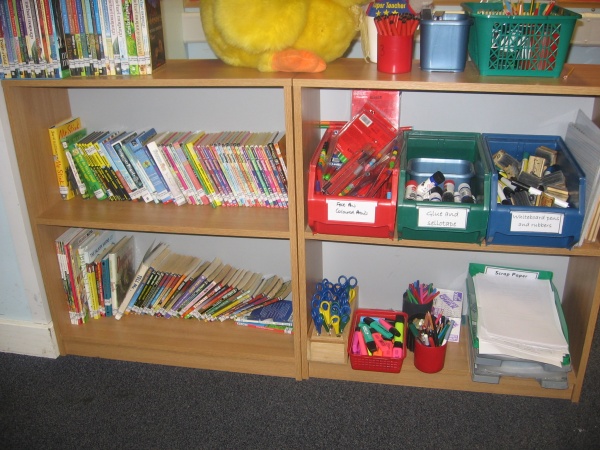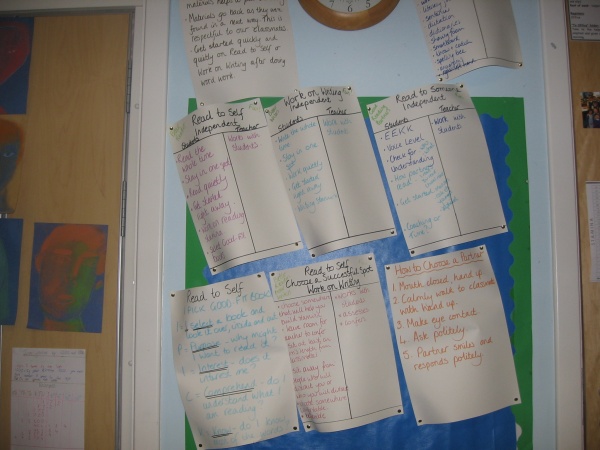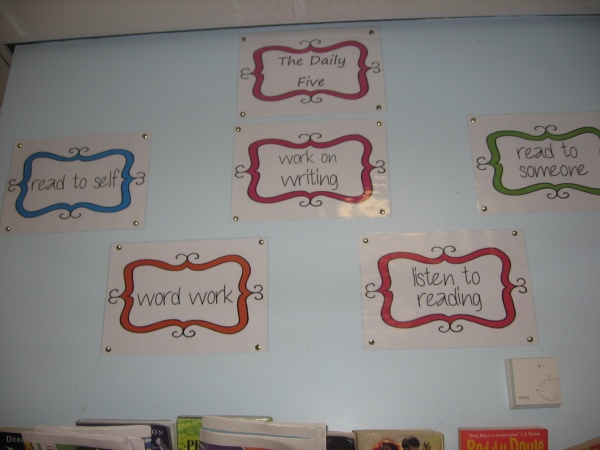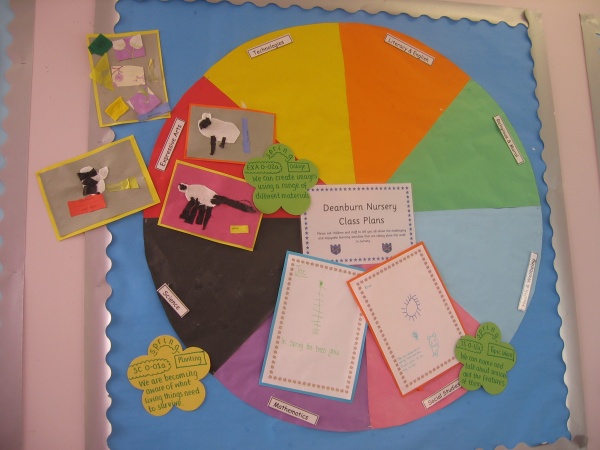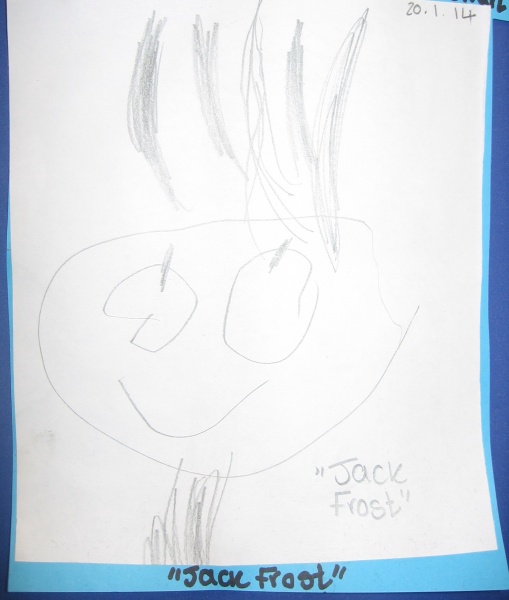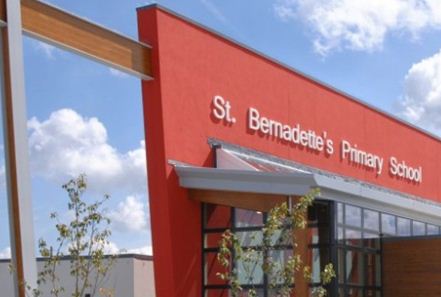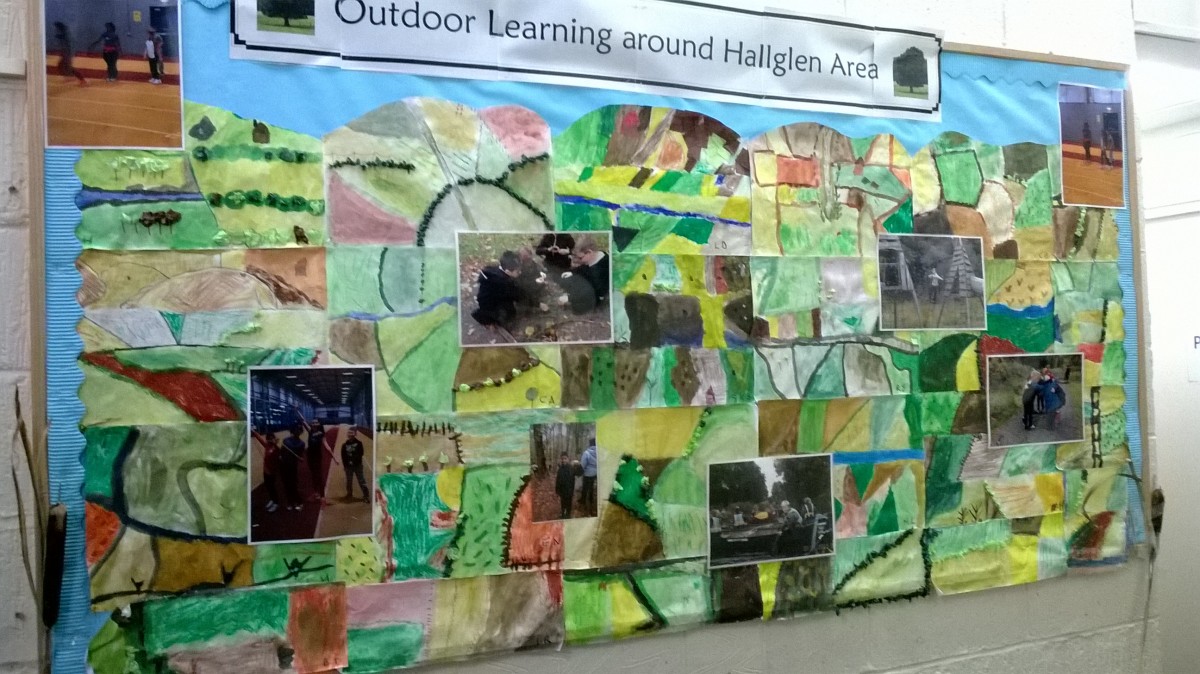 Following a meeting at Hallglen PS about staff development of skills within their curriculum, Alison McCalley and Linda Hastie gave Yvonne McBlain a tour of the learning walls around the school.
Following a meeting at Hallglen PS about staff development of skills within their curriculum, Alison McCalley and Linda Hastie gave Yvonne McBlain a tour of the learning walls around the school.
Click here to read more about this development process. Staff had made very effective use of walls around the school to share and celebrate learning. In every classroom the “learning walls” were used to help pupils understand what they were learning. Pupil self-evaluation and next steps were also displayed.
Themes like Houses and Homes linked learning and skill development in social studies, numeracy and technology. Teachers used their themes to integrate literacy skill development in reading, writing, talking and listening. 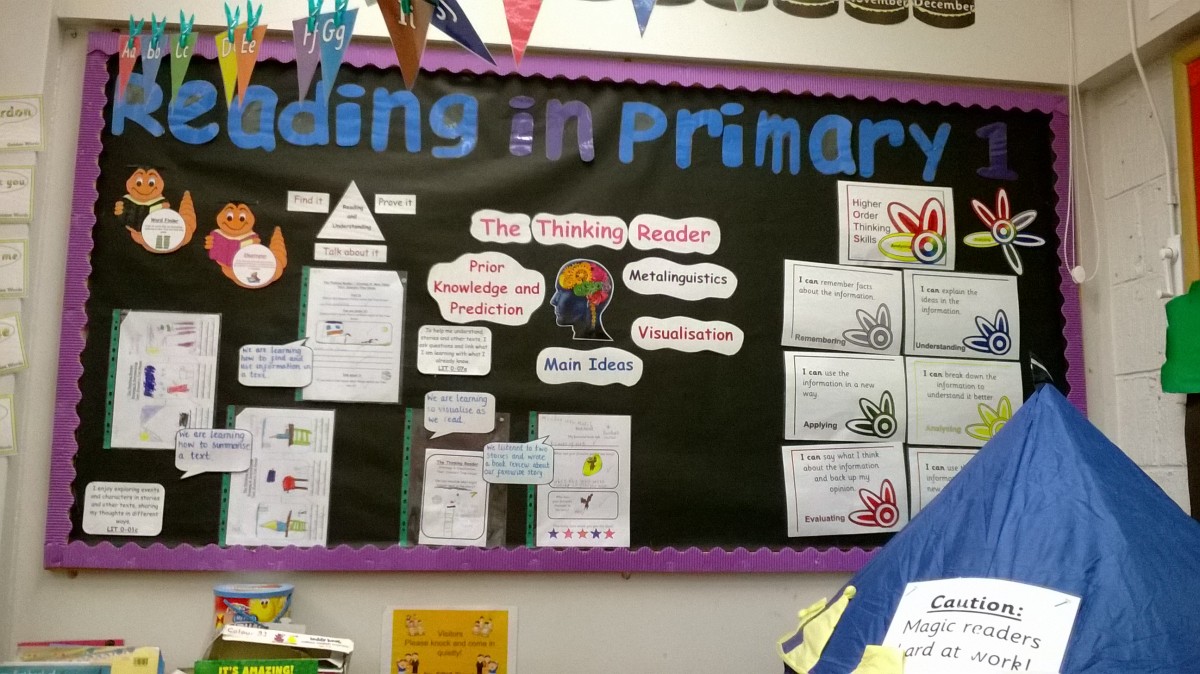 There was evidence of pupils developing their vocabulary and their higher order reading skills by being “Thinking Readers”. Writing tasks were carefully planned by teachers to progress literacy and numeracy across learning within the social subjects or science topics. This included homework tasks at all stages.
There was evidence of pupils developing their vocabulary and their higher order reading skills by being “Thinking Readers”. Writing tasks were carefully planned by teachers to progress literacy and numeracy across learning within the social subjects or science topics. This included homework tasks at all stages.
From the meeting, and the tour, it was clear that staff are collaborating very effectively to build their curriculum. Their joint exploration of the skills built into the experiences and outcomes means they can make progression explicit to pupils so that everyone can track and profile learning in a meaningful way. It was a pleasure to experience the depth of reflection going on at Hallglen PS. The following pictures give a flavour of the development of the curriculum and how staff are addressing the 4 aspects of the curriculum. Next steps for staff is to pull their bundles of connected E & Os together with the significant aspects of learning and contexts and build their curriculum framework. Staff worked on this during the May inset day and will combine it with subject specific and discrete skills progression to build and review their curriculum.
